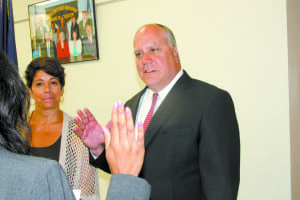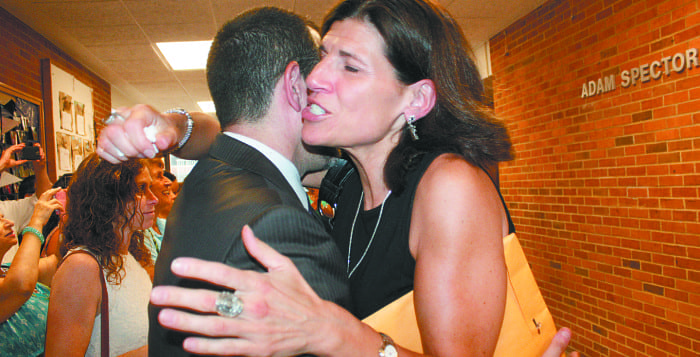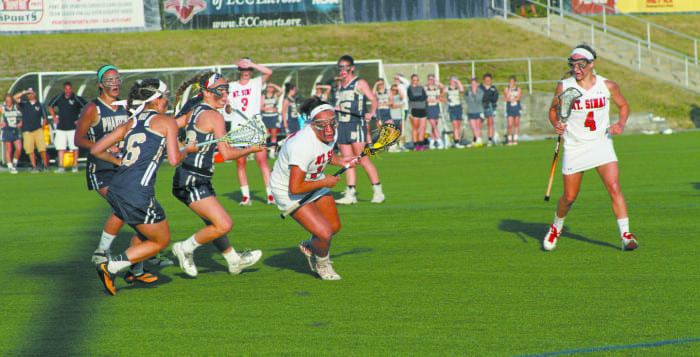Hauppauge graduate and star left-handed pitcher Nick Fanti, who was selected by the Philadelphia Phillies in the 31st round of the 2015 MLB Draft, agreed to terms on a contract with the club this week. He chose to forgo an opportunity to play at Marist College on a baseball scholarship, and will instead begin his minor league career with the Gulf Coast League Phillies in Clearwater, Florida, Philadelphia’s rookie-ball affiliate.
Fanti said the decision was very tough on him, but he’s confident he made the right one.
“I really felt at home at Marist and comfortable with the coaches and players that I was going there with, but in the end, I followed my heart and made a decision that I wanted to make,” he said.
Hauppauge head coach Josh Gutes was thrilled with his former player’s decision.
“Since he was a little kid, all he’s wanted to do was play baseball for a living, and now he’s going to get the opportunity to do so,” he said. “It wasn’t an easy decision at first, because of Nick’s loyalty to Marist, but he had the chance to pursue his dream and he’s going to do everything he can to make that dream come true.”
Fanti had an outstanding senior season for the Eagles. He went 7-1, with a 0.67 ERA, a 0.63 WHIP and 87 strikeouts over 52 innings. He also threw two consecutive no-hitters. Fanti won the 2015 Carl Yastrzemski award as Suffolk County’s best player, and started on the mound for the Suffolk County team in the Grand Slam Challenge, Long Island’s annual Suffolk County versus Nassau County All-Star game.
“I would have probably fainted from excitement,” Fanti said about the thought of his 10-year-old self receiving the news that one day he’d be a professional baseball player. “I can remember being told by teachers to stop writing and drawing about baseball during projects because that’s all I ever thought about, and still think about.”
Fanti grew up in a family of lifelong New York Yankees fans, though his Dad, Nick Fanti Sr., said in an interview in June, following draft day, that wearing a Phillies uniform one day wouldn’t be a problem.
“I’m just so happy for him,” Fanti Sr. said. “He’s going to make it anywhere he goes.”
The Phillies organization declined requests for comment, pending Fanti’s signing becoming official this week.
Fanti said on Twitter Monday night that he was “ready for this challenge” of taking on professional competition, which is obviously a step up from the high school competition that he’s used to, and the college competition that he bypassed.
Being selected in the MLB Draft, especially in the 31st round or later is far from a guarantee that an opportunity will present itself for a young player in the Big Leagues. However, New York Mets legends Mike Piazza and Keith Hernandez were both selected far later in their respective drafts than Fanti. Left-handed pitcher Kenny Rogers had stints with both the Mets and Yankees, and he was selected in the 39th round.
Some other notable 31st round picks include pitchers Scott Erickson [1990] and Pedro Feliciano [1995], who both played for the Mets and Yankees in their careers. Erickson went in the 31st round in his fourth time being in the MLB draft. Sean Gillmartin, a southpaw currently on the Mets’ roster, was selected in the 31st round of the 2008 draft, although he was again drafted in the first round of the 2011 draft.
A few Major League all-stars also got their start in the Gulf Coast League over the last decade. Atlanta Braves first baseman Freddie Freeman and Pittsburgh Pirates centerfielder and 2013 National League MVP Andrew McCutchen each played full seasons in the GCL.
After the Grand Slam Challenge game in June, before he had made his decision, Fanti said how different it would be playing alongside strangers as opposed to his teammates from Hauppauge, who became his best friends. Fanti will have no trouble making friends in the Phillies organization if he pitches for them anywhere near the way he did in high school.















